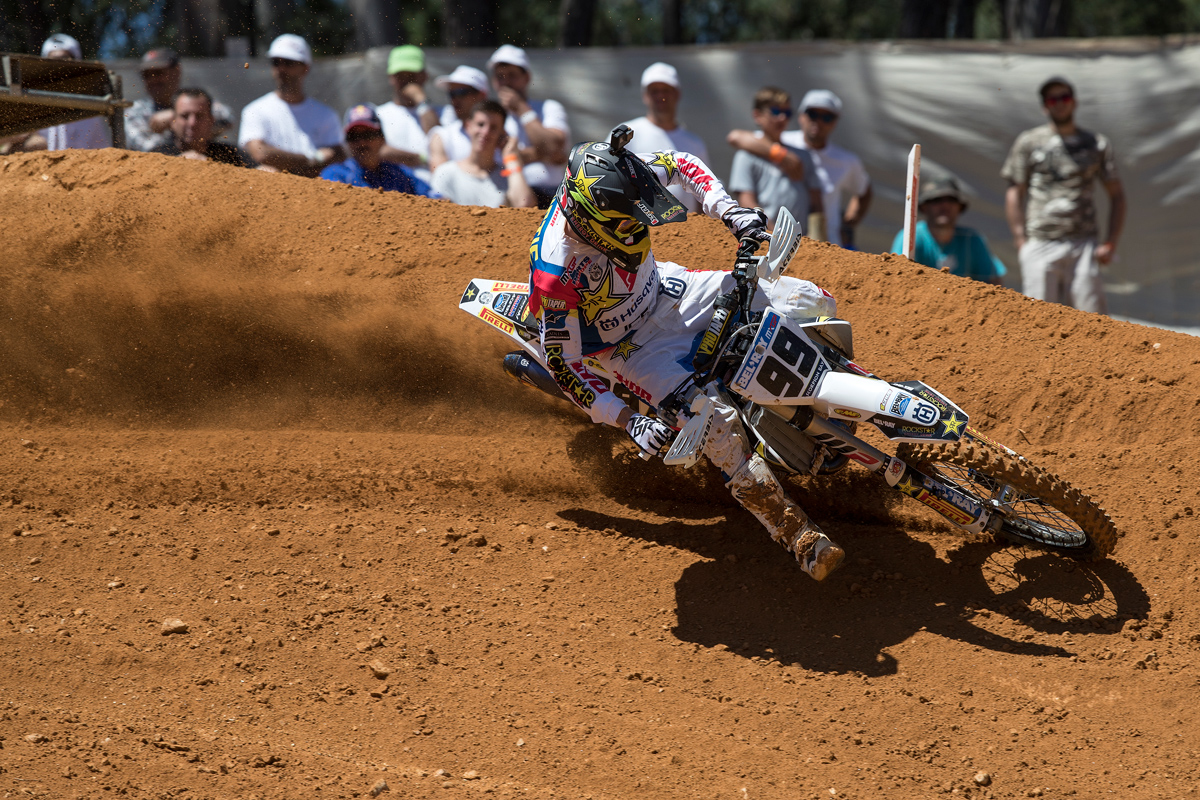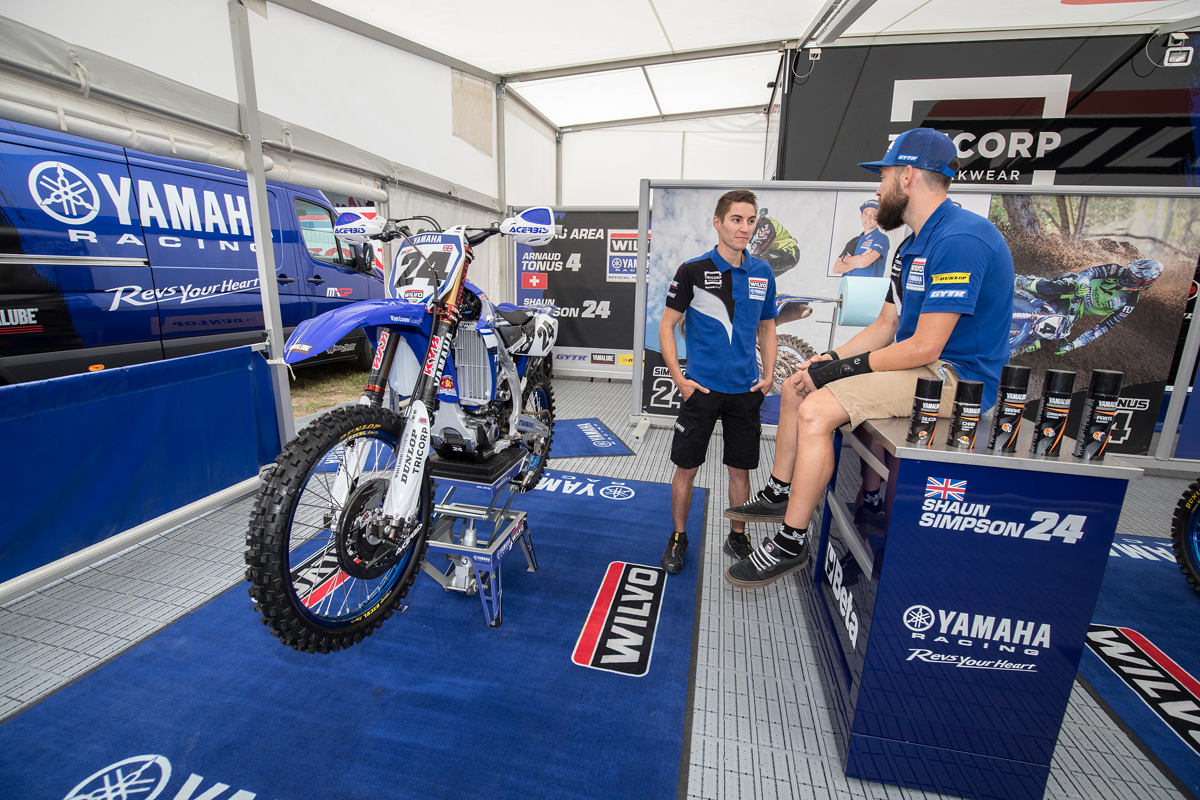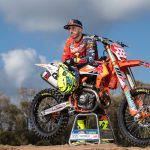Tracks are starting to get busy in the four corners of Europe as Grand Prix riders begin to scrape away the skim of rust that would have formed once the final flags had fallen on racing in 2017. Some will be well-drilled in supercross by now for those (potentially lucrative) winter appearances in Germany, Paris, Holland and Switzerland. Others might be getting used to new environments or machinery. In the world of MXGP there are not too many rider/team switches for 2018; Suzuki have dropped away, Jeremy Seewer, Julien Lieber, Brian Bogers, Valentin Guillod, Kevin Strijbos, Jordi Tixier, Graeme Irwin are the first clutch of names that comes to mind concerning their fresh horizons.
I swapped messages with former EMX250 race winner Adam Sterry last week on the way to Valencia. The twenty-one year old has suffered three sizeable injuries in the past two years and is now with his third team in that spell after the works Monster Energy Kawasaki team folded – to all intents and purposes – this summer. Sterry is now representing the F&H Kawasaki team and while he will have intimate knowledge of the KX250F will have to renew his attempt on the MX2 class from the framework of the relatively new Dutch set-up.
It led me to think about how a rider integrates into a team and how he/she finds the magic formula in the paddock and pit-lane that is key to success. Pre-season stories are often full of optimism and riders enthusing about their team, bikes, training programmes and chances. Very rarely do we get to know and see the truth of the behind-the-scenes work and it is actually much more complicated than we think. Melding a group of people through a long racing campaign (MXGP alone will involve 20 rounds, 40 motos and 60 race starts, including the Qualification Heats) with the different characters, levels of motivation, ethics, the ups-and-downs of competition, the delayed flights and hours on the road and the always-looming threat of injury dashing the whole effort to dust means a particular stress is placed on the dynamic and it doesn’t always fire as it needs to in order for the rider and team to perform.
Of course MXGP is full of very experienced personnel. Athletes at the top have been competing from a very early age and always need somebody or some specialist to work on the bikes the further up the racing pyramid they climb.
There still needs to be that chemistry to permit a rider to excel each Sunday. The racer needs unwavering support – moral as well as practical and logistical – and that same individual needs to gel-and-motivate his crew. Those little building blocks are often laid in these winter months, especially when a team is new and alien to each other.
I’ve been in a pitbox and heard a team – almost to a man – label their rider as a complete w**ker as they watched him being overtaken on the last lap of a moto. Maybe unsurprisingly that same team lasted only a few seasons in Grand Prix. I’ve also seen mechanics salivating at the mouth and prepared to brawl with rival team spannermen in support of their guy. Red Bull KTM, who routinely win so much and with the same small tightly-knit roster, are as close to a diverse family unit as I’ve seen in a racing paddock.

Moving outside of motocross and the power of a united and cohesive squad is not to be underestimated. Jonathan Rea has won three WorldSBK titles in a row and his bond at KRT with Pere Riba and his technicians is freakily good. The same observation can be made at Marc Marquez and his largely Spanish/Catalan group in the HRC garage. Back in motocross and a rider like Zach Osborne finds the backing, the equipment and the trainer to finally realise all that talent and speed for a remarkable 2017. In MXGP and the rigid and almost dictatorial schedule that Rockstar Energy IceOne Husqvarna have implemented for Max Anstie helped the talented Brit banish some of his weak points and excel at the highest level.

Britain’s only winner in the premier class since 2007 – Shaun Simpson – was the epitome of the do-it-yourself privateer story and admits that the circumstances he has found at Wilvo Yamaha provide the best infrastructure of support he has enjoyed in a long and varied career. Louis Vosters’ operation is still relative rookies in MXGP and will be even better in 2017 as they refine working methods but the Dutchman seems very attuned to what makes a race team tick in the best way: the right people, right resources, organisation, attention to details and hunger for performance that feeds from the very top. Importantly it seems that Vosters has a will to listen to his ‘talent’, and from years watching every type of set-up, from big budgets to zero budgets, this is a very underrated commodity for what is essentially a money drain or a time-consuming exercise in how to unearth capital and sponsorship.
The current climate for racing makes me feel that we should be grateful for teams at all, and this makes their structure and methods all the more fascinating: How do they survive? Why? How do they evolve and endure? The different fabric of the paddock is also curious; from factory teams, those with wealthy benefactors, to shoestring efforts, those that scrape-and-save and then suddenly find a sizeable sponsor. There has to be a philosophy and ethos that underlines everything otherwise there is no sustainability. The rider (in particular a new rider) is the last and most important ingredient in the broth.
Luckily for us we’re the ones that get to watch and taste the feast when all these plates come together.
Photos by Ray Archer








